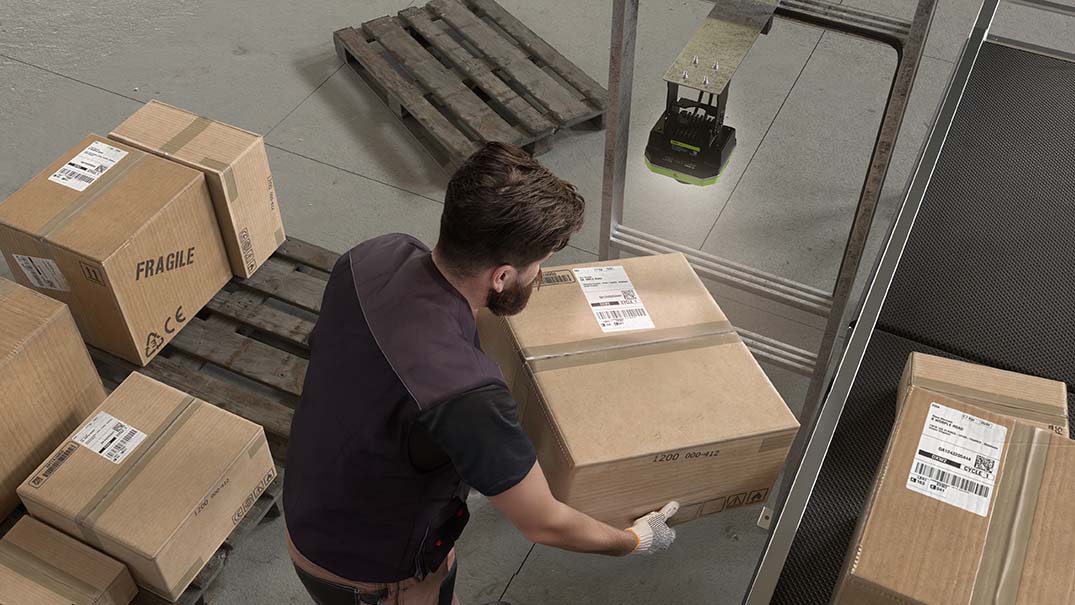Zebra Technologies has found that 82% of warehouse decision-makers in Europe agree that increased use of technology and automation boosts frontline productivity, but almost six in 10 (57%) don’t know where to start automating in the warehouse.
The findings appear in Zebra’s 2025 Warehouse Vision Study paper titled “The Great Warehouse Convergence: Where Technology, Efficiency and Innovation Align.”
“Warehouse, distribution and logistics operators can meet evolving customer expectations by adopting advanced technologies that drive efficiency and competitiveness,” says Phil Sambrook, transport and logistics vertical lead: EMEA at Zebra Technologies. “Intelligent automation and improved asset visibility will improve order accuracy, accelerate fulfilment and enhance returns management.”
Make AI Mobile with New EM45 Device
Responding to the needs of warehousing and logistics leaders, Zebra has launched the EM45 Series Enterprise Mobile computer, powered by an AI-capable Qualcomm processor and designed to improve productivity for frontline managers.
For postal, transportation and logistics providers, the EM45 enhances route management and provides proof of delivery with its high-performance 50MP rear camera, optimised for detailed photos, videos, and fast barcode reading.
The sleek yet rugged enterprise mobile computer delivers enhanced workflow efficiency and device security. It offers dual personal and work profile capabilities, which means users only need to carry one device. The device also features one-touch, push-to-talk collaboration and three custom action buttons to enable barcode scanning and distress call alerts.
The Zebra DNA software suite simplifies its deployment, while the EM45’s radio frequency identification (RFID) model includes built-in RFID for precise inventory management.
Human-Centred Solutions
Machine vision is increasingly attracting the attention of warehouse operators looking for the best paths to innovation. Three quarters (74%) of warehouse decision-makers in Europe believe that machine vision and/or fixed industrial scanning technology in key areas would save time and eliminate errors.
Another part of the study reports that two thirds (65%) plan to implement machine vision solutions within the next one to five years.
Warehousing operations can be streamlined through machine vision technology by intelligently automating data capture and reducing manual intervention. This is achieved by deploying smart cameras to automate inspection of products, packages and boxes for quality and completeness.
Zebra fixed industrial scanners (FIS) can be upgraded via a software subscription to perform advanced machine vision tasks.
Other advanced technologies which warehouse decision-makers in Europe plan to implement in their operations in the next five years include:
- AI (60%)
- Augmented reality (64%)
- Predictive analytics (63%)
Those decision-makers are embracing AI applications on handheld devices, saying that they:
- Streamline inventory management (79%)
- Optimise picking accuracy (79%)
- Improve safety (73%)
- Enhance quality control (71%)
These technologies can strengthen reverse logistics, which is a key priority for today’s warehouse businesses, with 69% of warehouse decision-makers in Europe focusing on automated returns processing to reduce inefficiencies.
“Human-centred solutions are set to reshape warehouses – nearly 80% of warehouse decision-makers in Europe agree that innovation makes warehouse jobs more appealing, attracting workers and supporting long-term workforce stability,” says Sambrook. “Warehouse leaders can get a strong start in their journey to automation by turning to technology partners experienced in helping transform operations.”

